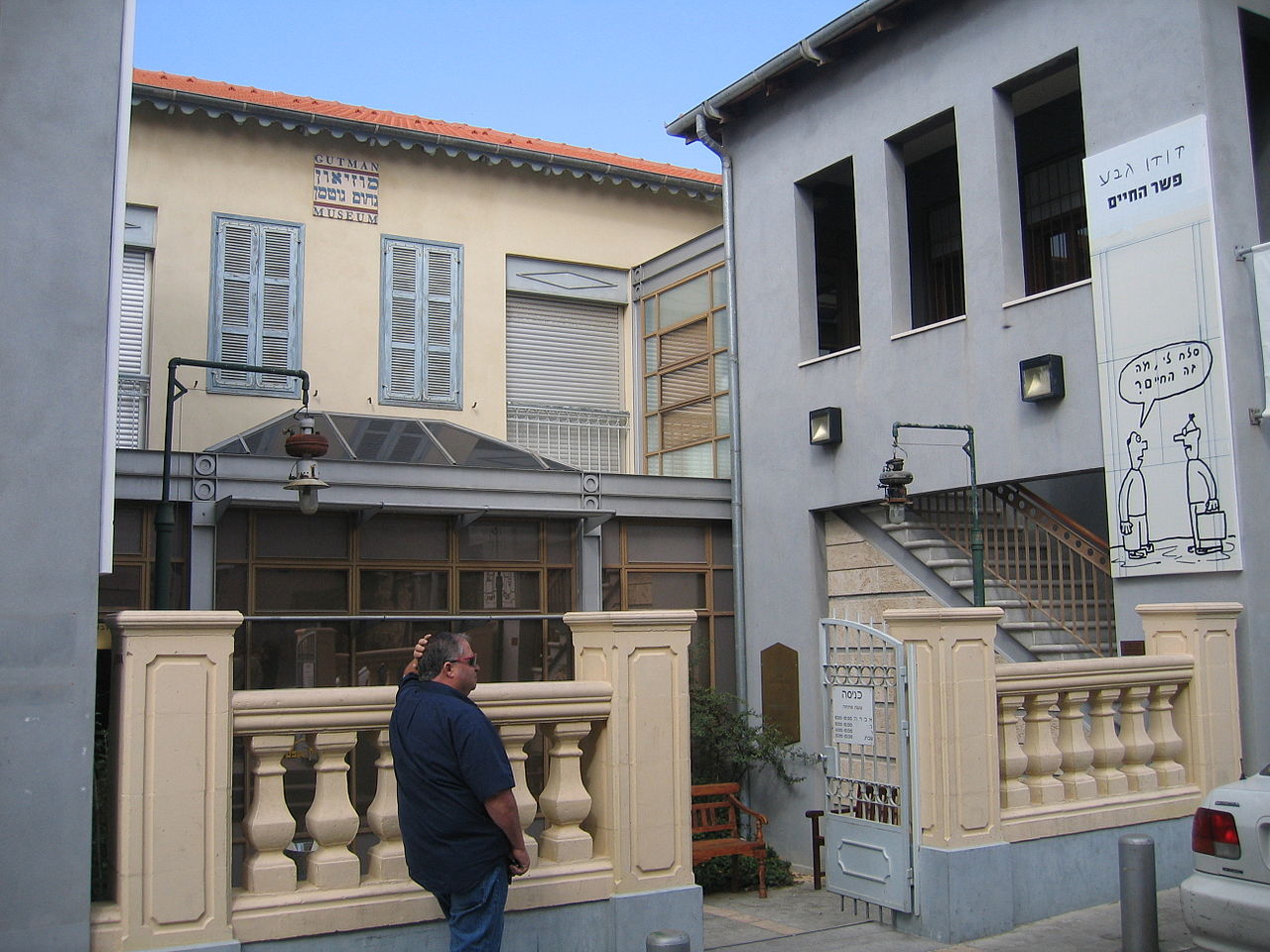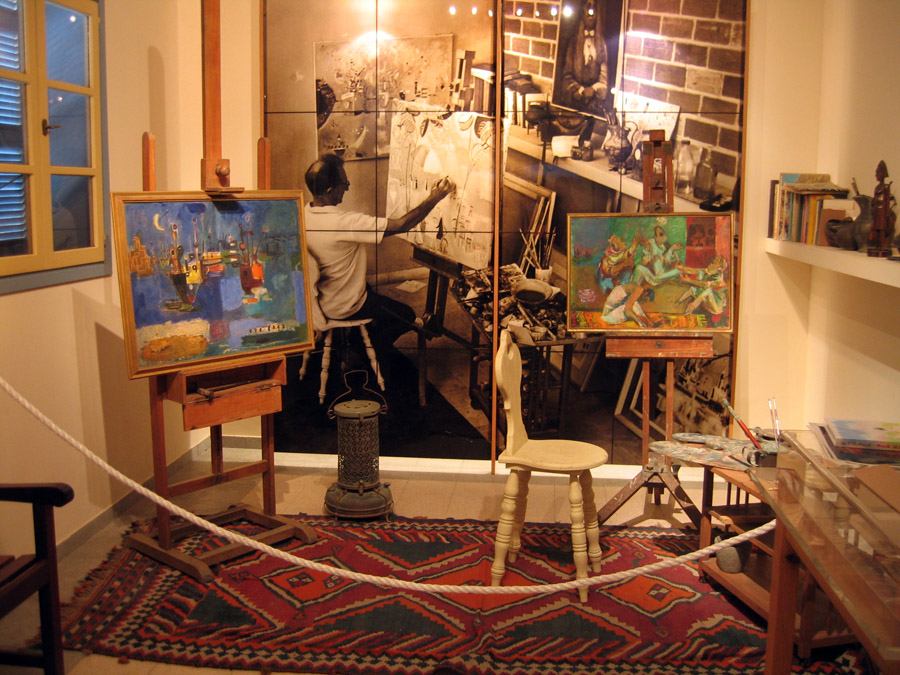Nahum Gutman Museum of Art
Plan Your Visit
- Open Times: Sunday closed. Monday-Thursday 10:00-16:00, Friday and holiday eves 10:00-14:00, Saturday 10:00-15:00.
- Prices: Children under 18 free, Adults, 30 ILS, Israeli pensioners and students 15 ILS, Tel Aviv-Jaffa residents 21 ILS. Pro Tip: Pensioners from abroad pay 25 ILS.
- Average Visit Duration: 1 Hour.
- Popular Times: Mid-day. The nearest parking lots are at 12 Yehuda Halevi Street and on the corner of Pines Street.
- Special Events: The museum offers special activities for families and children including art workshops, creative activities, story hour, and museum tours adapted for younger visitors.
- Relevant Tours: The museum offers guided tours of the exhibits and of Neve Tzedek. To get the most out of a visit to the museum, join a private Tel Aviv tour and include a stop at the Nahum Gutman Museum of Art.
The Nahum Gutman Museum of Art is housed in Neve Tzedek, the first neighborhood of Tel Aviv. Neve Tzedek is a beautiful neighborhood well worth exploring. The museum is named after one of Israel’s greatest artists, Nahum Gutman, and the permanent collection includes Gutman’s paintings, sculptures, and drawings.
 The Gutman Museum in Tel Aviv (Image source: Talmoryair)
The Gutman Museum in Tel Aviv (Image source: Talmoryair)
In addition, there are thematic exhibitions of Gutman’s work together with works by contemporary Israeli artists. Part of the museum is dedicated to prints, postcards, lithography, and posters created by Nahum Gutman. There are also displays of the many books transcribed and illustrated by the artist.
Who Was Nahum Gutman?
Nahum Gutman was born in 1898 in the village of Talansht, in Bessarabia (modern-day Moldova) which was under Russian control at the time. He immigrated to Israel with his family in 1905. Growing up he attended the famous Herzliya Gymnasium in Tel Aviv and at age 15, he went on to study at Israel’s most famous art school, Bezalel. Studies were put on hold during World War I. Gutman traveled to Europe to continue his studies and there he met many great artists who influenced his work. He developed his unique style through his willingness to try new things.
As an artist he drew on his own experiences as an immigrant, building a new life in a foreign country, and his travels. Gutman was inspired by artists such as Henri Rousseau, Raoul Dufy, Renoir, and Picasso.
 Gutman's workstation, one of the museum's exhibits (Image source: Tamarah CC BY-SA 2.5)
Gutman's workstation, one of the museum's exhibits (Image source: Tamarah CC BY-SA 2.5)
Nahum Gutman’s paintings often depict scenes from Arab villages, and rural scenes such as orange groves, and shepherds as well as more gritty urban scenes. For example, he did a series of paintings depicting Jaffa’s brothels. Every artist evolves over their lifetime and their styles can change. With Gutman, his work became lighter, and more free-spirited than his earlier paintings.
Gutman was also a prolific children’s book writer and was awarded the 1978 Israeli Prize for Children’s Literature. Nahum Gutman lived through the Ottoman, and British rule of Palestine, he saw Israel gain independence in 1948, and he went on to see the country flourish and prosper before he passed away in 1980.
Pro Tip: Visit Bialik Square in Tel Aviv to see beautiful mosaics by Gutman that tell the story of the city, its people, and its history.
History of the Nahum Gutman Museum of Art
The museum building was constructed at 21 Shimon Rokach Street as the residence of the Shulman family in 1887. It was one of 48 new homes built in the first neighborhood of Tel Aviv, Neve Tzedek.
Neve Tzedek is also home to arguably the best ice cream shop in the city, Anita’s just a 4-minute walk from the museum. Twenty years later the building became the headquarters of Hapoel Hatzair newspaper, and the editors, Yosef Aharonovich, Dvora Baron, and Yosef Haim Brenner lived in the building.
One of Gutman's famous works in the Museum (Image source: Lishay Shechter)
The building became a hub of literary activity and a meeting place for intellectuals, artists, and writers, earning it the name Writers’ House (or Writers Home). It remained the home of the newspaper from 1907 to 1914. The building was abandoned in the 1960s, and in 1992 it was among several historic structures in the White City to be renovated and restored. Then in 1998, the Nahum Gutman Museum of Art was opened thanks to the donation of Gutman’s work by his family.
Highlights of the Gutman Museum
- One of the museum rooms has been recreated to look like Gutman’s studio and authentic artifacts from his studio are on display.
- The Nahum Gutman Museum has an events hall and gift store.
- This museum brings together artwork from various contemporary eras including Gutman’s work.
- The museum’s permanent collection includes about 200 of Gutman’s creations.
 Login / Register
Login / Register
 Contact Us
Contact Us
 Certificate of Excellence
Certificate of Excellence Guaranteed Departure
Guaranteed Departure Low Prices Guaranteed
Low Prices Guaranteed 24/7 Support
24/7 Support




